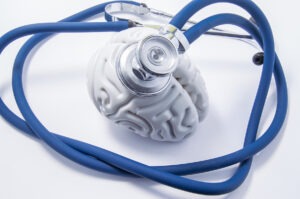
A brain injury is among the most serious of all the injuries that can be suffered. The brain is perhaps the most crucial part of the body, as it controls all of the body’s voluntary and involuntary responses. Unfortunately, as important as it is, the brain has only a limited ability to heal itself from damage.
A traumatic brain injury (TBI) is a disruption in the normal function of the brain. It can be caused by a sudden jolt, blow, or bump to the head or body, the result of the head striking an object, or an object penetrating the skull. This type of injury often results in permanent injuries and expenses.
Read on for more information about the treatment of TBIs and the legal process of recovering damages related to a TBI that was caused by the reckless or careless actions of someone else.
Early Treatment: Addressing Complications
As explained by the Brain Injury Association of America, when a person suffers a brain injury, two things immediately happen:
- The brain tissue responds to the injury through a series of biochemical and physiological responses that can result in further damage.
- In response to the injury, the individual may be unconscious and experience difficulty breathing or performing other motor functions.
When an individual arrives at the hospital or emergency department with a brain injury, one of the things that medical providers will be looking for is the level of his or her consciousness. Doctors do this using the Glasgow Coma Scale and other diagnostic tools to determine if the individual is awake and alert, awake and confused, appears unconscious but responds to stimuli, or is unconscious and unresponsive.
If an individual is considered unconscious for more than 24 hours, it is referred to as a coma and will often give rise to concerns about consciousnesses disorders.
In addition to a coma, some of the consciousness disorders that can be experienced after suffering a TBI include:
- Vegetative state: A vegetative state occurs when an individual is not aware of his or her surroundings but may open his or her eyes, make sounds, or have reflexive responses.
- Minimally conscious state: This involves an individual who has a limited but pronounced amount of awareness of self and surroundings. This state is often regarded with hope as it can mean a transition from a coma or vegetative state to a state of greater awareness.
- Brain death: Brain death occurs when there is no measurable activity in the brain, including the brainstem. The brainstem is responsible for controlling the body’s involuntary responses such as breathing, heart rate, and sleep/wake cycles. Because the body cannot survive independently without these involuntary responses, and because brain death is irreversible, the decision is often made to withdraw life-preserving care.
Consciousness is not the only matter that physicians will concern themselves with during the early hours and days following a traumatic brain injury. The patient will also be assessed to ensure that he or she can breathe. If there is a penetrating injury or other injuries that could lead to infection, antibiotic medication will often be administered to prevent infection. Other common complications will be addressed as well.
Some of those complications may include:
- Hydrocephalus: This condition is a buildup of cerebrospinal fluid on the brain, as a response to the trauma that the organ experienced. Hydrocephalus is dangerous, as it can increase pressure on the brain and result in further damage. Often, a shunt will be surgically placed to drain this fluid away from the brain to relieve the pressure.
- Seizures: Seizures are a relatively common occurrence after a traumatic brain injury. If an individual has suffered a seizure, he or she will often be given medication to prevent other seizures from occurring and possibly causing additional damage to the brain. Seizures can occur even months or years after the injury. Recurring seizures are often referred to as post-traumatic epilepsy.
- Damaged blood vessels: In addition to the brain, the vessels that control the flow of blood to the brain can also become damaged by the injury, resulting in an increased risk of strokes, blood clots, and other life-threatening issues. In some cases, surgery will be required to remove clotted blood that can increase pressure on the brain and other tissues.
- Fever: Fever is often the first sign of infection in a brain-injured person, or could be the result of damage to the part of the brain that controls body temperature. Either way, a fever will raise concern for physicians treating a brain-injured patient.
Expect More, Receive More: Legal Support That Feels Like Family
Other Procedures Involved in Treating a Traumatic Brain Injury
Once the acute phase of treating the brain injury has passed, immediate complications have been addressed, and the individual is conscious, therapies can address specific issues caused by the injury.
Those therapies include:
- Physical therapy to increase or maintain physical strength, coordination, and flexibility.
- Occupational therapy to assist the individual in relearning to complete daily tasks such as bathing, getting dressed, or cooking.
- Speech therapy to help an individual regain the ability to communicate or to learn to use a communication device.
- Psychological therapy to help ease the individual’s emotional distress over a vastly changed lifestyle and to help him or her learn coping skills to manage stress in the future.
- Vocational counseling to assist those who can no longer perform the work tasks they performed before the injury to learn new skills that can be used in the course of gainful employment.
- Cognitive therapy to improve the person’s memory, attention, learning, planning, and judgment.
No two brain injuries are alike. An injury that caused damage in one lobe, or side of the brain, will cause vastly different deficits than an injury occurring in a different part of the brain. Because of this, not all patients will require the same type of therapies.
The Impacts of TBIs on All Parts of Life
A traumatic brain injury can affect every facet of the injured person’s life, such as:
- At home: Family members often find that their relationship with the injured person is dramatically different after the injury takes place. Parents, spouses, or children may find themselves acting as caregivers to an individual who can no longer complete daily tasks. The spouse may experience loss of consortium, which refers to the loss of physical intimacy or companionship often experienced due to the injured person’s disabilities or changes in hormones after the injury. Friends that once lined the halls of the hospital with concerned offers to help may quietly fade away as they realize they no longer have any common interests or experiences with the injured person. It is not unusual for those living with their own brain injury, or that of someone in their household, to feel as if no one in the world understands what they are going through.
- At work: The unemployment rate of the average adult with a brain injury is around 60 percent, two years after the injury. What this means is that many brain-injured individuals cannot work as a result of their injury. Those who can work often must have accommodations, such as shorter shifts, fewer workdays in the week, lighter workloads, and longer breaks due to the fatigue that often accompanies this type of injury.
- At school: Accommodations are also frequently required for children who return to school after suffering a brain injury. This can include the provision of a paraprofessional who can assist the child in staying organized and controlling behaviors or impulses; recorded instructional time to assist with memory loss; oral or multiple-choice testing in place of essay questions; and grading that is based on more on effort than mastery of the subject.
- In society: Because many brain-injured individuals suffer mobility issues as well as difficulty with behavioral or impulse control, they often cannot participate in community activities that they previously enjoyed.
The Cost of Living with a TBI
Brain injuries are extraordinarily expensive to treat, with the lifetime costs of medical treatment alone estimated at $85,000 to $3 million. This, along with the additional financial strain of losing work or earning the same living as before the injury, often results in homelessness. Studies indicate that around 53 percent of the homeless population in the U.S. is living with a brain injury.
While some people gain these injuries as a result of the rough and dangerous conditions that homelessness can offer, many others experience homelessness because the injury was a catalyst.
Contact a Traumatic Brain Injury Attorney
Brain injuries, by nature, come with unknowns. Will the injured person wake up? Will he or she communicate? Will he or she master the tasks necessary for self-care? Can he or she return to work or school? If the injury you suffered, or that was suffered by your loved one, was caused by the recklessness or carelessness of someone else, there can be financial assistance available with the help of a traumatic brain injury attorney.
A traumatic brain injury lawsuit is a legal complaint filed in civil court that seeks to prove the at-fault party’s liability. It also ties a dollar amount to the damages that the injured individual has endured as a result of the injury.
You can recover both economic and non-economic damages through this process, including:
- Medical treatment costs, such as the costs of emergency treatment at the scene of the accident or in the emergency department; transportation to the hospital by either ambulance or helicopter; diagnostic testing needed to determine the severity of the injury; prescription medication; the services of a physician or surgeon; physical therapy and rehabilitation; the cost of a long-term care facility if the individual can no longer care for his or her daily needs and family members can’t provide the specialized care needed; and the provision of assistive devices such as crutches, wheelchairs, or communication devices.
- Lost wages for work missed because of the injury or to attend an injury-related medical appointment.
- Loss of future earning capacity, if disabilities resulting from the injury render the individual unemployable.
- The cost of hiring someone to perform household services that the injured person can no longer do himself or herself.
- The cost of modifications made to the home necessary to accommodate the injured person’s disability, including lowered countertops, roll-in showers, or automatic door openers.
- Physical pain and suffering incurred as a result of the injury or treatment of the injury.
- Emotional distress caused by the uncertain nature of this type of injury.
- Loss of consortium.
- Loss of the enjoyment of life.
Traumatic brain injury claims are generally paid out through the insurance provider of the at-fault party. Your accident attorney should determine all sources of liability and all insurance resources that can be accessed to ensure that you can obtain enough money to address your expenses and the permanent impacts that your injury will have throughout your life. This is why insurance is normally named as the top factor in how much an individual receives through a traumatic brain injury settlement or court award.
Many individuals, when faced with the need to pursue compensation after an injury, are tempted to try to obtain this compensation on their own without the guidance of an attorney. This might be a mistake, as brain injury cases are complex, both in the damages that are claimed and the formalities that are required by the court.
An experienced brain injury attorney could help you understand the available legal options. For a free case evaluation, contact a traumatic brain injury attorney today for more information.






